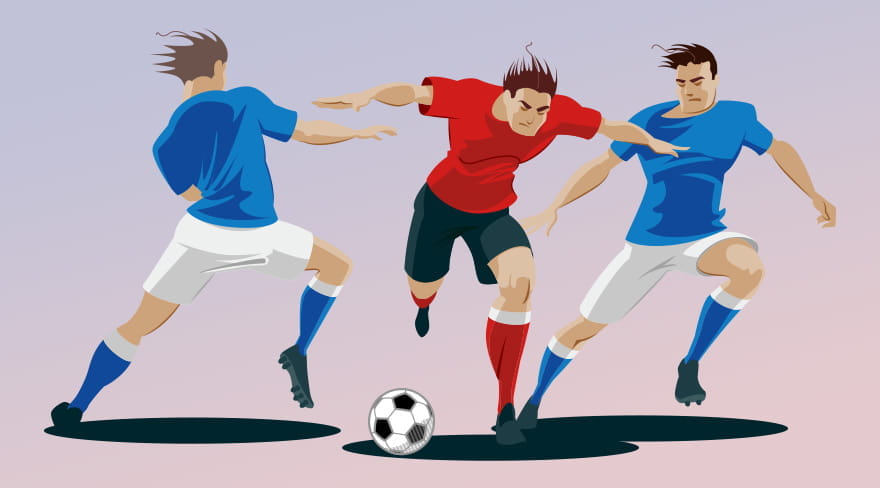Tiki-Taka vs. Gegenpressing: Comparing Iconic Playing Styles
Football has always been a playground of tactical

Football has always been a playground of tactical ingenuity, with Tiki-Taka and Gegenpressing standing as two of the most celebrated strategies. These approaches have shaped the identities of some of the greatest teams and managers, leaving an indelible mark on the game. While both styles aim for dominance on the field, their methods and philosophies couldn’t be more different, offering unique thrills for fans. For those seeking to engage with the excitement on a deeper level, platforms like CaptainsBet kenya login https://captainsbet.xyz/login/ often provide a gateway to experience the action more closely.
Understanding Tiki-Taka
Originating in Spain, Tiki-Taka relies on precise short passes and maintaining possession to control the pace of the game. This strategy is designed to disorient opponents, create space, and wait for the perfect opportunity to strike. A significant aspect of this style is the concept of positional play, where players form triangles, constantly moving to provide passing options and maintain structure.
Key Features of Tiki-Taka:
- Possession Mastery: Teams often dominate possession, sometimes exceeding 65%, leaving opponents chasing shadows.
- Short Passes: Crisp, accurate passing ensures the ball keeps moving.
- Fluid Positions: Players swap roles dynamically, keeping the defense guessing.
- Patient Build-Up: The focus is on gradually wearing down opponents before delivering the final blow.
The epitome of Tiki-Taka was seen during Pep Guardiola’s tenure at FC Barcelona and Spain’s golden era (2008–2012), which included their UEFA European Championship wins and the FIFA World Cup triumph. It’s this seamless approach that allows for unpredictable attacking play, making it incredibly difficult to counter.
Exploring Gegenpressing
On the other end of the spectrum is Gegenpressing, or counter-pressing, a strategy that focuses on regaining possession immediately after losing the ball. This approach, made famous by Jürgen Klopp, thrives on chaos, exploiting moments when opponents are disorganized. Unlike Tiki-Taka, Gegenpressing is all about speed, aggression, and capitalizing on turnovers.
Core Principles of Gegenpressing:
- Immediate Pressure: As soon as the ball is lost, players swarm the opponent to win it back.
- High Defensive Line: Defenders push up to compress the play and support pressing efforts.
- Rapid Transitions: Once the ball is regained, the focus shifts to attacking swiftly.
- Intense Work Rate: This style demands supreme fitness and mental sharpness.
Borussia Dortmund under Klopp and Liverpool’s dominance from 2018 to 2020 are prime examples of how Gegenpressing can dismantle even the strongest opponents. Liverpool’s ability to turn defense into attack within seconds redefined high-intensity football.
Comparing the Two Styles
While both Tiki-Taka and Gegenpressing seek control, they operate on opposite ends of the tactical spectrum. Here’s a breakdown of their differences:
| Aspect | Tiki-Taka | Gegenpressing |
|---|---|---|
| Focus | Possession and control | Regaining possession fast |
| Tempo | Slow and deliberate | Fast and aggressive |
| Defensive Approach | Maintain ball possession | High pressing |
| Player Attributes | Technical skills | Physical endurance |
Practical Lessons for Teams
For coaches and players, deciding between Tiki-Taka and Gegenpressing depends on several factors:
- Player Skillsets: Technically gifted squads may thrive with Tiki-Taka, while physically robust teams suit Gegenpressing.
- Opponent Weaknesses: Exploiting gaps in defenses often dictates the choice of strategy.
- Game Scenarios: Depending on whether a team needs to hold a lead or chase a result, tactics may shift.
As football evolves, hybrid tactics have become common. Pep Guardiola’s Manchester City integrates Gegenpressing elements into their possession-based style, creating a more balanced and adaptable approach. Similarly, Liverpool blends structured build-up with aggressive pressing, making them a formidable force in any situation.
Conclusion
Tiki-Taka and Gegenpressing represent two iconic ideologies in football, each with its unique strengths and challenges. Understanding these styles not only enhances appreciation for the game but also offers insights into how teams achieve success on the world’s biggest stages. Both have proved their merit in different eras, showcasing that football’s beauty lies in its diversity of thought and execution.







